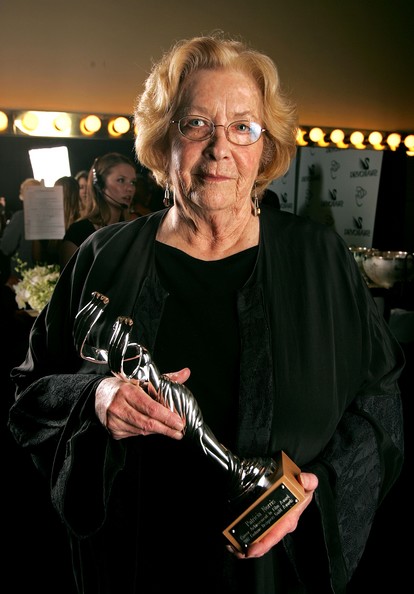 Patricia Norris with her lifetime achievement from the Costume Guild in 2007Patty Norris is a national treasure but I believe she'd be the last person to say so. When I spoke to the enduring costume designer over the phone about sixth Oscar nomination for 12 Years a Slave, she shocked me again and again with her modesty and her absolute lack of sentiment about what I've always thought of as a very illustrious Hollywood career. But her honestly was, shall we say, refreshing.
Patricia Norris with her lifetime achievement from the Costume Guild in 2007Patty Norris is a national treasure but I believe she'd be the last person to say so. When I spoke to the enduring costume designer over the phone about sixth Oscar nomination for 12 Years a Slave, she shocked me again and again with her modesty and her absolute lack of sentiment about what I've always thought of as a very illustrious Hollywood career. But her honestly was, shall we say, refreshing.
The 82 year old's career, as we know it at least, began over just over 40 years ago with westerns like Rio Lobo (1970) and Support Your Local Gunfighter (1971) but she doesn't get misty-eyed or nostalgic about her filmography. "I think it was just luck. I started as a stock girl at MGM and I've always been comfortable with clothes," she explains. But to hear her tell it, her developing career wasn't born of and ambitious creative drive, but from practicality. "I was married but I was left with five children and I had to support them! So you start taking almost any work. There are a few I would like not to think about!"
I instantly worry (aloud) that I'll touch on one of those accidentally but if I do in the ensuing conversation, she doesn't let on.
I assumed her current flurry of work (Killing Them Softly, The Immigrant, 12 Years a Slave) was a sudden return from retirement but she corrects the impression. She's just picky since she's been frugal. "It's one of those things. Save your money and you don't have to do anything. I do just what I want to do. If it doesn't come along I just do housework."
Happily for fans of costume dramas, The Immigrant and 12 Years a Slave came along. And these she definitely wanted to do. [more...]
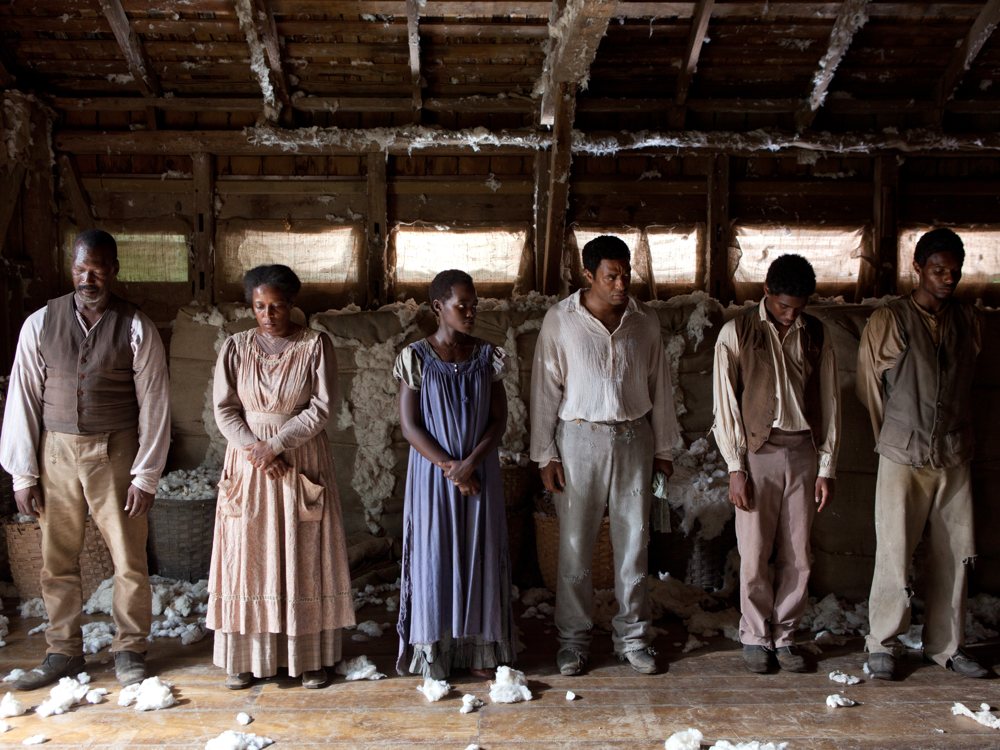
Her interest in 12 Years a Slave was mostly prompted by the challenge of researching the era. And when she designs, she says, she has to keep both character and period in mind at all times, especially in periods where authenticity is debatable. "I love history. The only thing you can do is read a lot. It's before the camera came into play. There are some fairly good drawings of house slaves and people like that that were treated better. But the general slave populations, nothing." Well, nothing beyond the odd random drawing like 'Happy black men leaning against a tree' which could have been done for propaganda purposes or editorial cartoons or the like.
I wonder if she's kept the comfort of the actors in mind -- perhaps easier linings for the skin -- since many of the costumes in the film look tremendously uncomfortable and scratchy. But she's unsentimental about this as well, claiming it was never discussed.
"Wool is wool and cotton is cotton. I never did anything to make it easier on them. I just dressed them the way I felt they would be at the time and there you go." But this shoot was not about comfort, anyway. "It was so horribly hot down there that there were just no end to the torture. You could be in a cotton shirt and you'd still be hot and wet."
The most difficult challenge of the job, she confirms my suspicion, was setting the subject matter aside to actually focus on the clothes. "You have to forget about it to get the work done."
The costume she perks up most when talking about is Alfre Woodard's plantation mistress, who is purposefully over-costumed to pull rank. Though explaining how she came to it is more elusive:
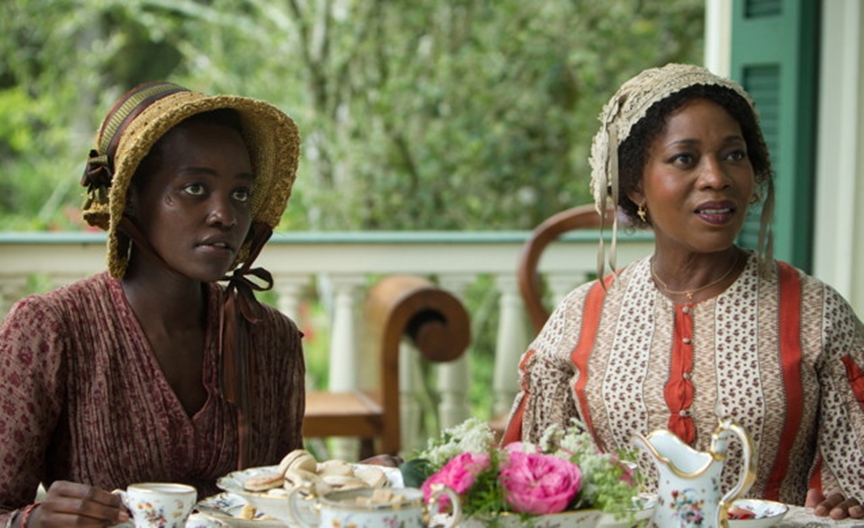
You know something. You see clothes or see fabrics sometimes and you just know who it's for. I can't tell you how that happens but it does."
Though she's as lost as you or I as to when The Immigrant might finally hit movie theaters, she was similarly excited about that job. The strippers, in particular, she says were great fun to work on. I liken them to magpies -- which seems to please her -- since they're such a blast of color and eccentricity in a film that's often very subdued, as if they dressed themselves frantically while rummaging through old costume chests backstage.
I wonder if it's hard to costume for a film where nearly everyone is dressed in black like The Immigrant (2014) or The Assassination of Jesse James (2007) but Norris doesn't seem to mind, opening my eyes a little to a larger palette. "Well, actually no one is always in black. There are dark greens and dark browns. I think what you find is usually in that period with the immigrants they were going to wear their one good whatever. And men's suits were always black and grey. So you have a kind of -- the lady in the pink dress is not going to look right. The period really dictates the colors."
Her passion for period is evident even when we turn to contemporary films, which excite her less. Though she costumed Scarface (1983) she all but cedes credit to the director and producer "they knew exactly what they wanted" and Michelle Pfeiffer herself for how iconic those costumes have become "She's a beautiful girl and it was perfect for the character."
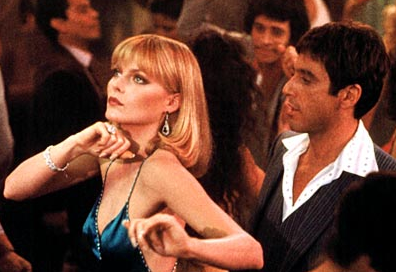 iconic style from "Scarface"
iconic style from "Scarface"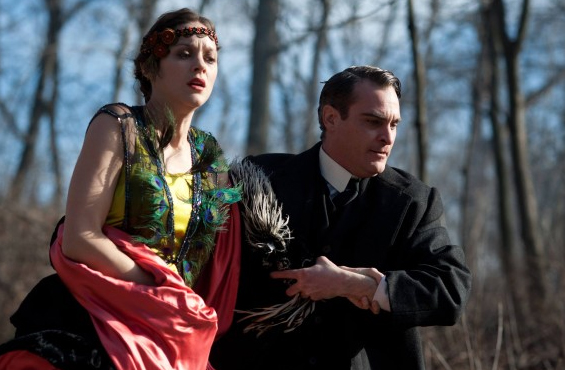 "The Immigrant" is coming soon ?
"The Immigrant" is coming soon ?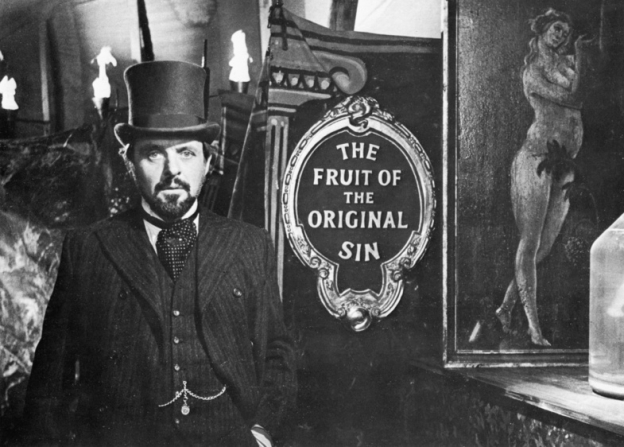 "Elephant Man" her second Oscar nom and first collaboration with David Lynch
"Elephant Man" her second Oscar nom and first collaboration with David Lynch The Assassination of Jesse James (2007) one of her three Brad Pitt films
The Assassination of Jesse James (2007) one of her three Brad Pitt films
But these days she doesn't have much interest in taking contemporary jobs "People expect you to go to the store and buy it so you're really not designing anything. You turn into a shopper. And they make deals with companies you don't want. Everyone will wear ____".
Like most well regarded designers she has designed for some actors and directors repeatedly. "Jess is terrific" she says when her Jessica Lange films (Cat on a Hot Tin Roof, Frances) enter the conversation and she has nothing but praise for how easy and nice Brad Pitt (Jesse James, Killing Them Softly, 12 Years a Slave) is as a co-worker. But I was most amused by her take on David Lynch, another favorite whom she first worked with on The Elephant Man (1980). She did both costumes and production design on the pilot for Twin Peaks (1990) as well as costumes for its cinematic follow up Fire Walk With Me (1992) and, despite her preference for period authenticity over contemporary works she obviously enjoyed contributing to his surreal madness. "That's such a seminal work, but he is quite an odd artist," I say to get the conversation going. Her perfectly blunt though warmly stated response:
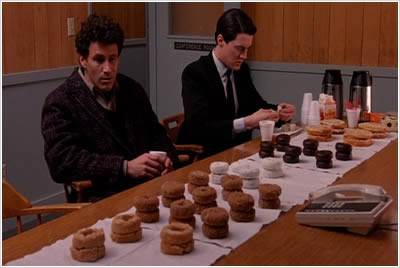
My mind is odd, too, so we fit nicely. I don't find him strange so there you go."
Finally, Patty and I arrive at the sordid topic of Oscar. 12 Years a Slave marks her sixth nomination. She has attended three of her five previous nominated years. But she does not seem to be looking forward to her fourth. "Nerve-wracking. No pleasure at all," she says emphatically. "You'd like to win but you don't want to get up there on stage!"
I am disappointed to hear that she isn't a movie fan herself and never really has been, but she makes a kind of sad sense when she explains that they're work to her, too technical an exercise. "I'm trying to enjoy the movie but there's that thing where you can see the man behind the curtain," she explains. "It's very hard to get lost in them."
Nevertheless she's a dutiful AMPAS member, watching her screeners and voting. She's opinionated about the outcomes, too. "You know the modern movies are not going to make it unless they're very special like that drag queens in the desert movie." And she wishes they'd let the various branches choose their own winners rather than determine them by Academy-wide voting. "If you look at who belongs to the academy they're going to vote for the sequins."
What does she make of her chances this time?
I'm up against too many sequins."
Ever the truth-teller.
